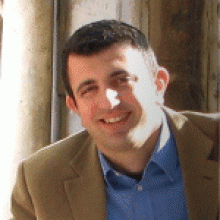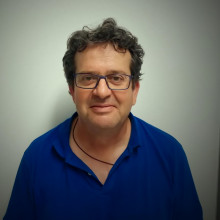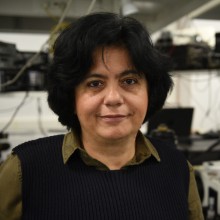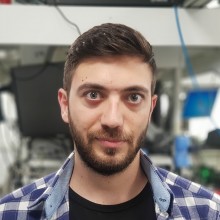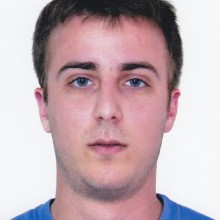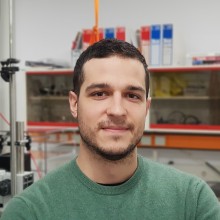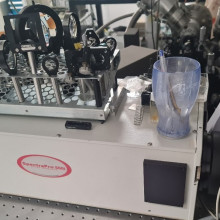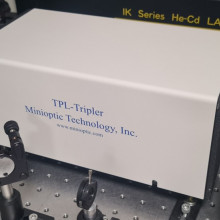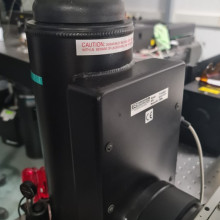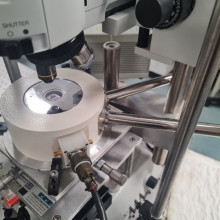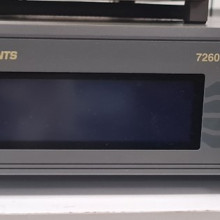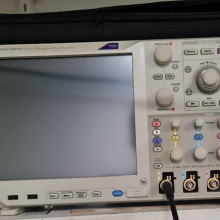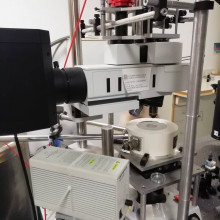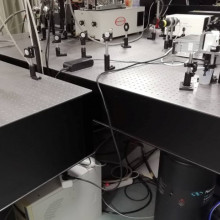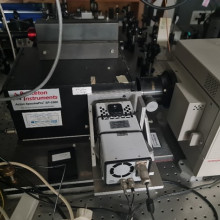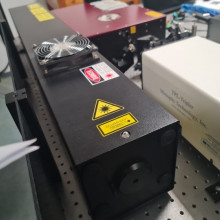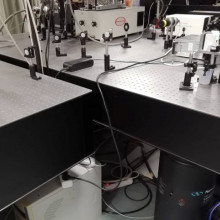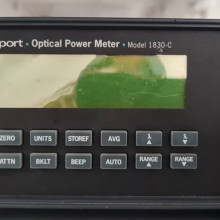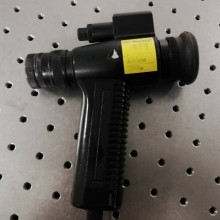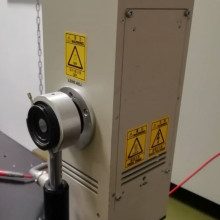The activity involves the study of photonic devices ranging from the semiconductor structure all the way to functional devices. Aspects such as room temperature single photon emitters, robust Nitride based photonic and polaritonic devices for room temperature, hybrid organic / nitride devices and prototype polariton devices. The activity is primarily focused in semiconducting optical nano devices.
Research Topics

Semiconductor quantum dots (QDs) are the ultimate sources of “on demand” single photons, entangled photon pairs, and indistinguishable photons, with direct applications in quantum cryptography and quantum information processing schemes. In this direction, piezoelectric (PZ) QDs offer concrete advantages on several practical aspects of single or entangled photon sources. The case of InAs QDs grown on (211)B GaAs substrates is an excellent example of a PZ QD system which is technologically viable, in the sense that one can take full advantage of the available GaAs device technology.

Exciton-polaritons are composite half-photon half-exciton states, existing inside semiconductor microcavities in the so called “strong-coupling” regime. Owing to their composite light-matter nature, polaritons exhibit strong nonlinearities and their behavior is often governed by a distinctive bosonic character, which is responsible for a number of spectacular demonstrations such as stimulated scattering, parametric amplification, condensation, and polariton lasing. From a device point of view, a particularly attractive aspect of polaritons is the possibility to operate a polariton laser at a hundred times lower threshold currents compared to conventional laser diodes. The low-threshold of polariton lasers is due to the fact that their operation is not based on the conventional population inversion lasing scheme, but is rather achieved when a Bose-condensate is formed at the polariton ground state.

The realization of strongly interacting photonic systems is one of the holy grails of quantum optics. Achieving the nonlinear quantum regime in photonics where the single-site effective photon interaction energy is larger than the losses, opens a plethora of interesting phenomena such as photon blockade, photon crystallisation, and opportunities to realize quantum simulators for the study of condensed matter problems such as Mott-insulator to superfluid phase transitions in arrays of optical cavities. In solid-state cavity-polariton systems consisting of a cavity photon and a quantum well exciton, dominant direct exciton interactions originate from short-range exchange terms. These interactions have led to the manifestation of a number of intriguing collective phenomena, including formation of spontaneous coherence. Very recently, photon correlation measurements on strongly confined polaritons have demonstrated weak quantum correlations. Increasing polariton-polariton interaction further is crucial to exploring a new regime of strongly correlated photons. One way to enhance interactions is to engineer polaritonic excitations with a permanent dipole moment. Here, we demonstrate electrical tuning of nonlinearities in exciton-polariton condensates. Enhance polariton-polariton interactions are obtained using wide QWs in an electrically driven MC by exploiting the quantum confined Stark effect (QCSE) to form dipolar polaritons and demonstrate tuning of the exciton-exciton interaction. As a direct consequence of this, we obtain enhancement of the polariton emission in both linear and lasing regimes with a simultaneous reduction of the polariton lasing threshold and shorter polariton condensate formation times due to enhanced exciton scattering. Such controlled enhancement of exciton interactions, are expected to provide the new route to realization of non classical light sources relying on polariton quantum blockade.

Hybrid polarion laser
Organic materials exhibit exceptional room temperature light emitting characteristics and enormous exciton oscillator strength, however, their low charge carrier mobility prevent their use in highperformance applications such as electrically pumped lasers. It has been suggested that combining organic and inorganic semiconductors in a hybrid microcavity, exploiting resonant interactions between these materials would permit to dramatically enhance optical nonlinearities and operation temperature. Here, we study cavity mediated hybridization of GaAs and J-aggregate excitons in the strong coupling regime under electrical injection of carriers as well as polariton lasing at near room temperature under nonresonant optical pumping. Such hybrid organic-inorganic structures, combine many desirable properties such as large exciton Bohr radius, favouring polariton-polariton interaction and relaxation as well as large oscillator strength for room temperature operation. Our experiments pave the way towards realization of hybrid organicinorganic microcavities which utilise the organic component for sustaining high temperature polariton condensation and efficient electrical injection through inorganic structure.
THz polariton bolometer device
Bolometers are well-known for their ability to detect electromagnetic radiation by absorbing energy and measuring associated temperature changes. The main drawback is their limited sensitivity compared to more expensive cryogenically cooled systems. As applications of THz technologies are becoming more common place, the development of future THz detectors, such as antenna-coupled bolometers and graphene-based devices is gaining ever increasing interest. In a seemingly separate area of research, semiconductor microcavities with quantum wells create a fusion of electronic and optical properties in the form of exciton-polaritons. While traditionally studied for their fundamental effects, these quasi-particles have demonstrated a number of properties useful for hybrid electro- optic devices: direct coupling to both electric and optical fields, fast-response times, long coherence lengths/times, and strong nonlinearity as compared to typical nonlinear optical materials. A variety of theoretical studies have also identified polaritons as prominent generators of THz radiation, by making use of the bosonic final state stimulation of THz frequency transitions or oscillations between multiple quantum wells. Here we consider polariton based THz detection scheme. In contrast to conventional bolometer schemes, a polaritonic based bolometer sensor couples THz induced thermal variations to a polariton-based signal rather than an electrical output. The long coherency of polaritons enable an additive effect over the device size leading to increased sensitivity. Based on the above constituents, we realize an exciton-polariton based interferometric device utilizing one-dimensional channels to propagate coherent polariton condensates. We experimentally measure the temperature induced changes in the interference of counter-propagating polariton condensates and show that such a bolometer device can serve as a platform for temperature sensing and consequently be adopted for use as a THz radiation detector.

Förster resonant energy transfer (FRET) is a high efficient non-radiative dipole-dipole mechanism that can be exploited for direct energy transfer between an inorganic system (III-N QW) and an organic system in proximity for lighting and photovoltaic applications. We perform systematic investigation of FRET within a hybrid prototype structure based on a nitride quantum well donor and a light emitting polymer acceptor. Initially, a combination of self-consistent Schrödinger-Poisson modeling, MBE growth runs, and steady-state and time resolved photoluminescence experiments were employed to investigate the influence of a wide structural parameter space of the nitride component that included growth temperature, material composition, and thickness of the well and barrier material. The energy transfer process was subsequent studied in hybrid structures completed with spin-casted overlayers of two polyfluorene materials. Unexplored aspects of the dipole-dipole coupling were probed and correlated to the characteristics of the nitride quantum well and the hybrid interface. Important conclusions of the study have been the beneficial effect of the quantum well confinement on the nitride PL emission and the experimental establishment of the strong correlation between the intrinsic photoluminescence yield of the nitride and the FRET efficiency in the completed hybrid structure. Structure optimization led to demonstration of up to 50% FRET transfer efficiency at room temperature.
Heads
Technical Staff
Alumni
Infrastructure Equipment

Molecular Beam epitaxy system by VG 80H with automated control.
- Capable of handling up to 3" substrates
- RHEED 15KeV system
- Mass spectrometer 1 - 300 amu
- K-cells for Galium (2), Aluminum (2), Arsenide, Indium, Silicon and Berilium
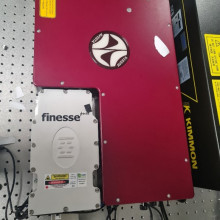
Femtosecond laser system delivering high-repetition rate fs-pulses (266nm-2μm), including two green pump lasers, a Ti-sapphire 80MHz fs laser, a Regenerative amplifier, an optical parametric amplifier, and a TPL tripler stage (Coherent MIRA 900, REGA 9000, Coherent Verdi V10 and V6, Laser Quantum Finesse 10W)
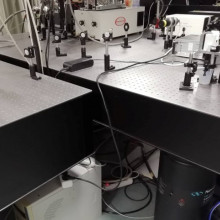
Time-correlated single photon counting (TCSPC) an amazingly sensitive technique for recording low to level light signals with picosecond resolution and extremely high precision. Includes a single photon counting module (SPC-130) (Becker & Hickl GmbH)





